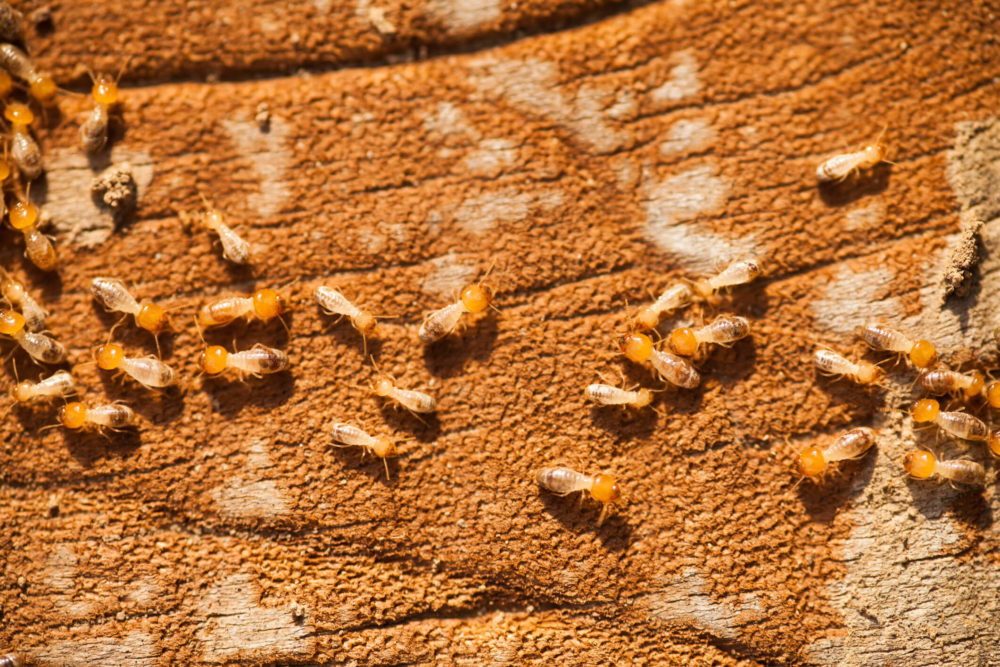 Termites are insects that cause billions of dollars in property damage in the U.S. every year because of how much they love eating the wooden structures of homes. However, a termite’s diet might actually surprise you because of how varied and diverse it is.
Termites are insects that cause billions of dollars in property damage in the U.S. every year because of how much they love eating the wooden structures of homes. However, a termite’s diet might actually surprise you because of how varied and diverse it is.
From the pest control specialists at Precise Termite & Pest Control, here is our answer to “What do termites eat?” so that you can be an informed homeowner who is ready to handle any insect that comes your way.
Do Termites Only Eat Wood?
If you ask almost anyone what termites eat, the instant response you’ll probably get is wood. However, termites do not only eat wood, as they have a varied diet that helps them thrive in many different environments around the world.
Termites are resilient insects that can eat almost anything. They commonly eat dying plants, roots, fungi, and grasses. They also eat mulch, sugarcane, and cotton. Certain types of trees are especially attractive to termites, including pine trees, oak trees, palm trees, and ash trees. Materials that you have lying around your yard may attract termites to feed as well, such as cardboard, fabric, carpet, insulation, and pet feces.
How Do Termites Digest Cellulose?
For termites to be able to eat wood, it is necessary for the insects to digest cellulose, which is no easy task. To break down the wood in a termite’s diet, the insects have beneficial bacteria and protozoa in their stomachs. The digestive enzymes from these organisms naturally break down cellulose to help termites digest wood and get nutrition from it in the form of sugar.
To aid the digestion process, termites will often eat decaying wood because it is easier to digest than fresh wood. Baby termites develop these stomach organisms later as they grow and develop, so worker termites must pass along sugar from their own cellulose processing through mouth-to-mouth feeding.
How Do Termites Get Energy?
Worker termites are tasked with feeding and grooming other termites in a colony, and they are the ones that forage for food to share with their companions. When a termite finds a food source, it will leave a trail behind and go back to the colony to get more help to feed everyone else. A termite’s energy comes from its unique gut bacteria that allows the insect to break down cellulose and fuel its usable energy.
Understanding Termites’ Diet and Why It’s Important
A termite’s diet is crucial to its survival and serves as a guide for its habits and activities. You can reduce your risk of attracting termites by limiting potential food sources for this insect and keeping your property clean and tidy. Any decaying wood or debris materials should be promptly removed from your property so that they don’t attract termites. However, some termite food sources cannot be avoided, especially since these resourceful insects are known to infest roof shingles, utility poles, decks, fence posts, and other outdoor structures.
At the first sign of potential termite activity, call Precise Termite & Pest Control for a free inspection. We specialize in this type of extermination and offer fast and reliable service that is always affordable
Don’t let termites eat away at your precious home and yard. Contact us at 866-971-2847 for help and advice!
